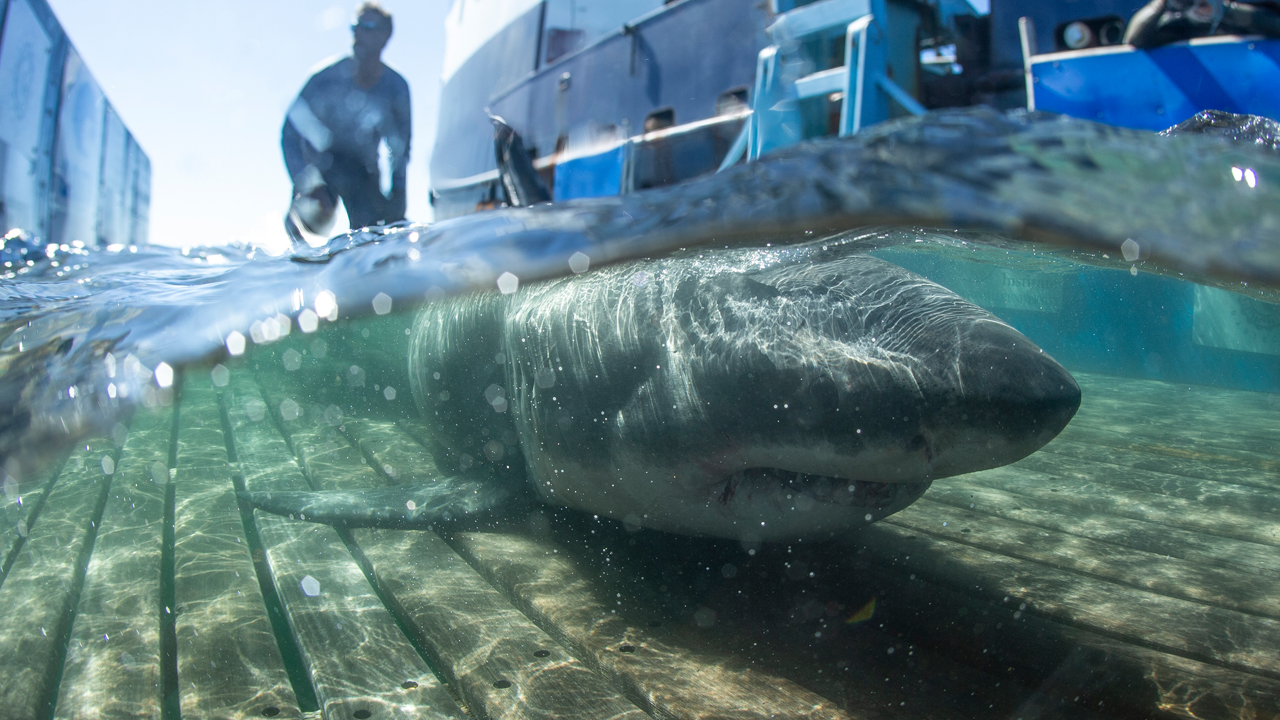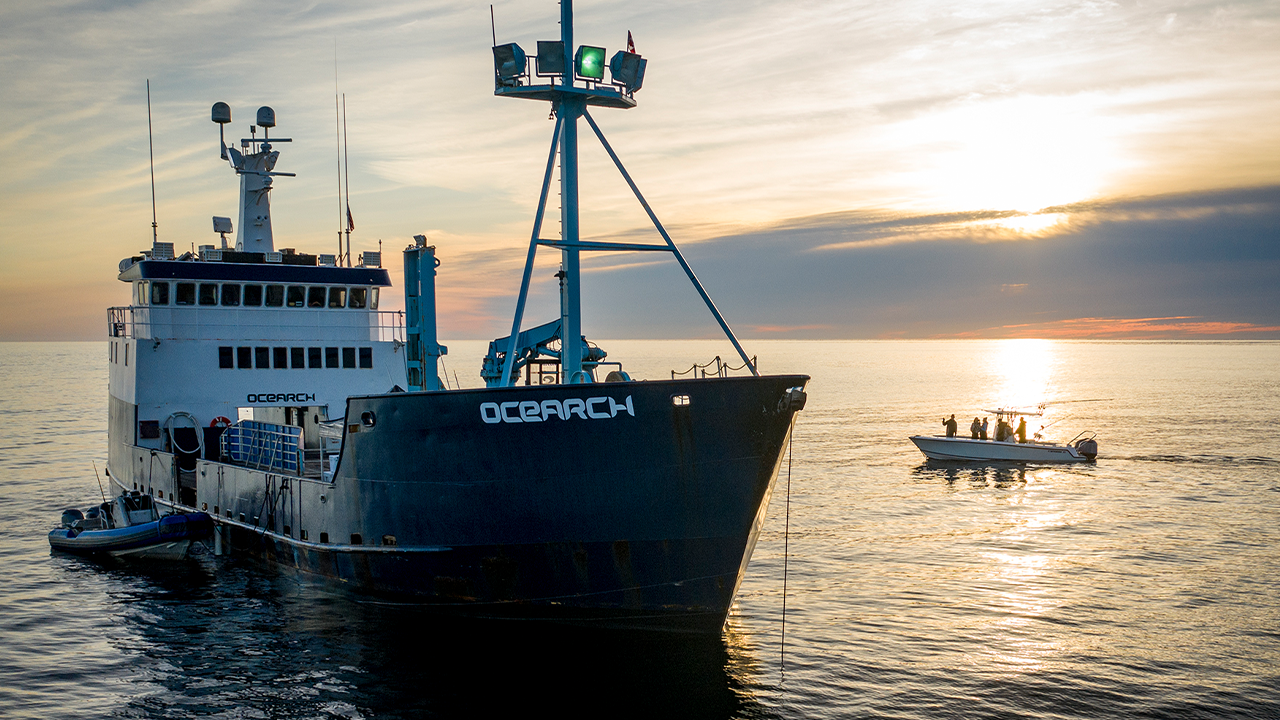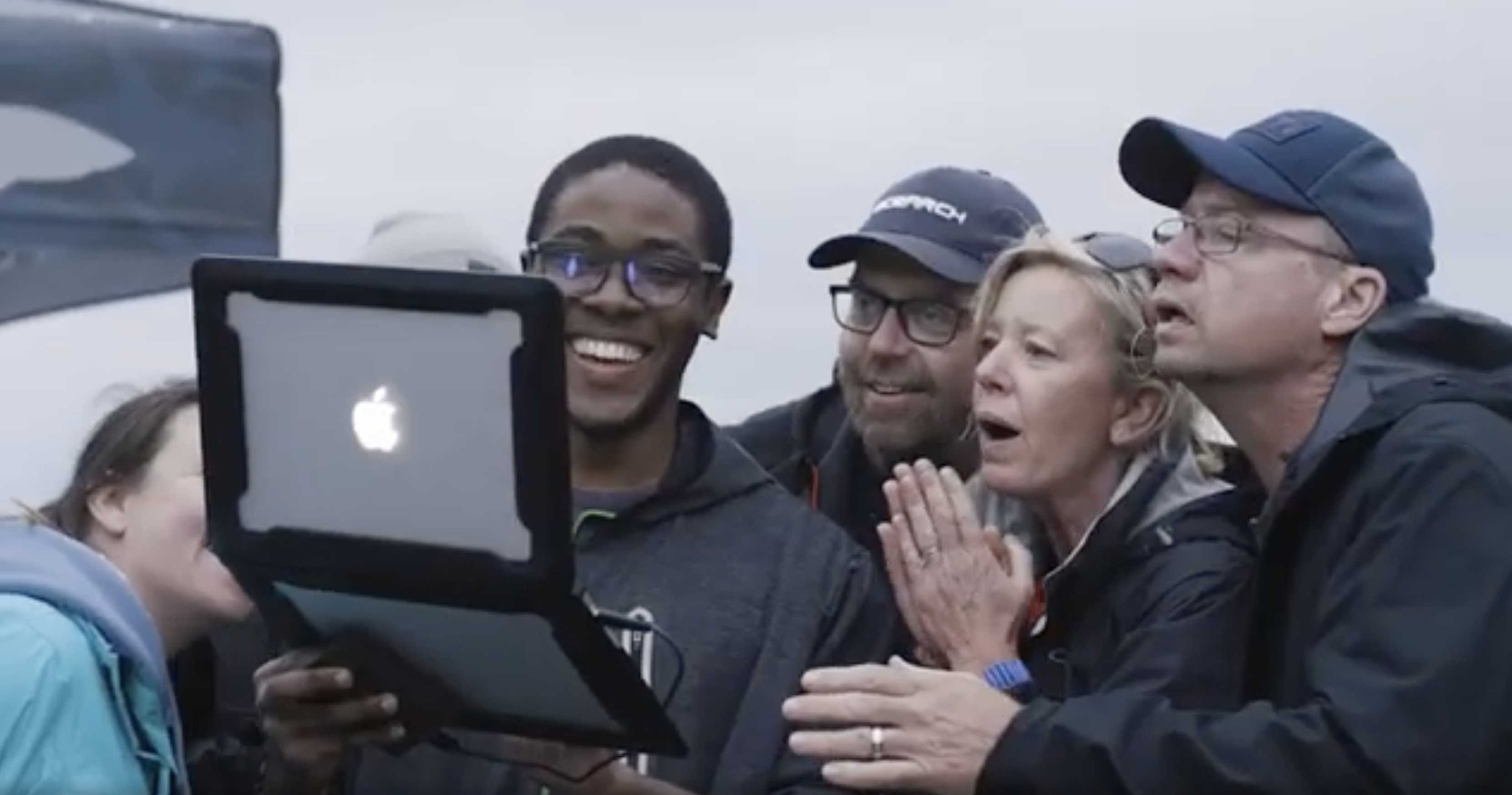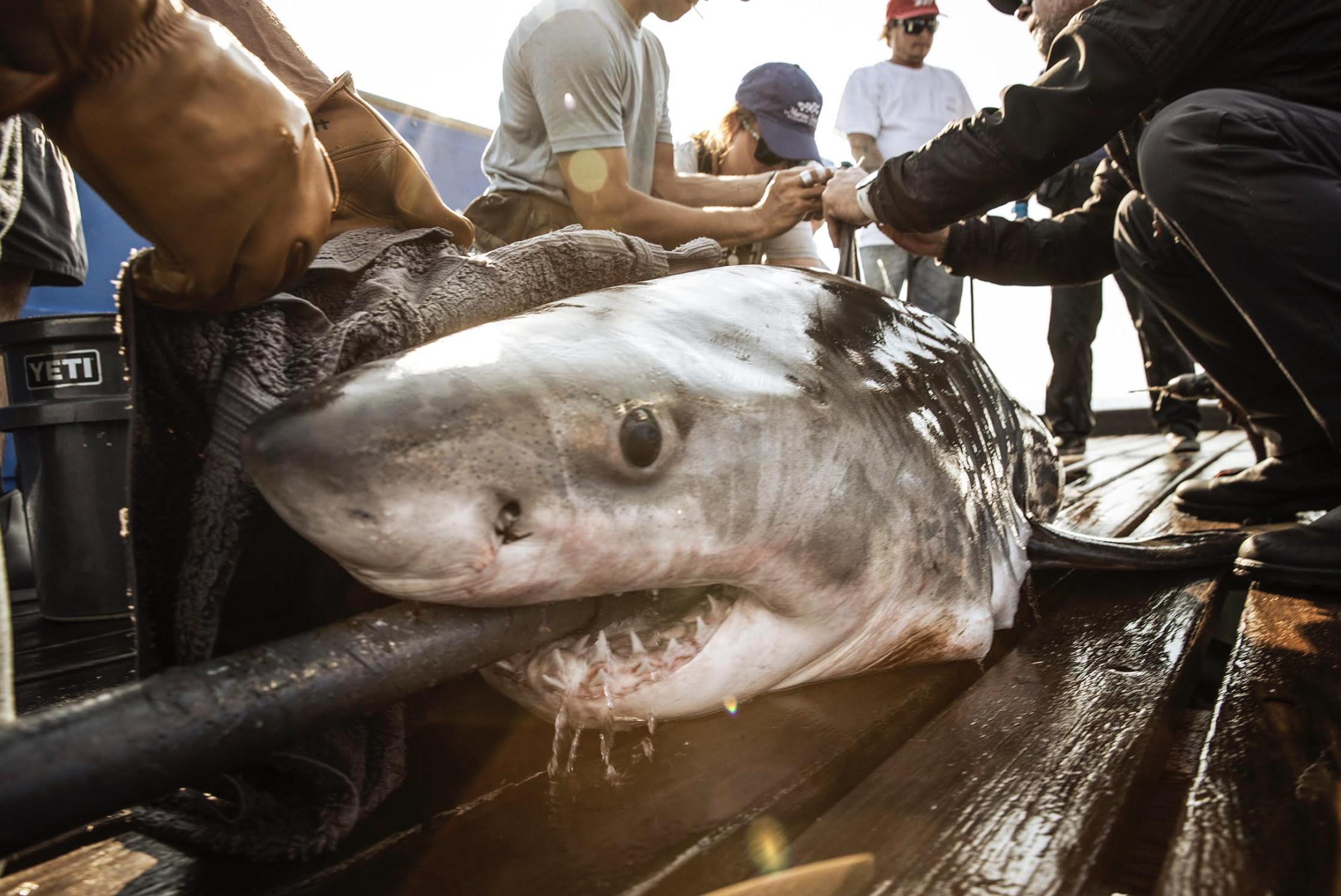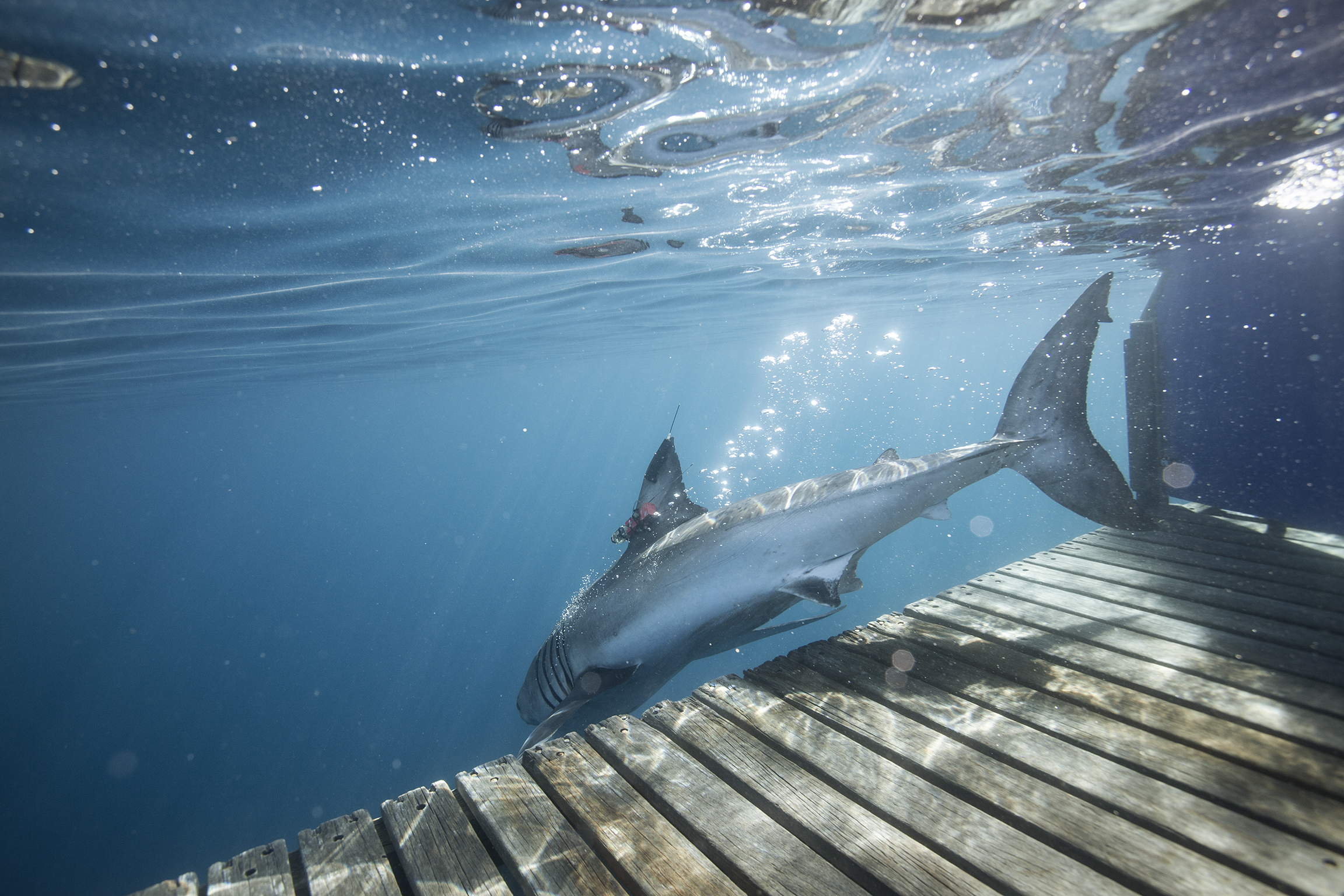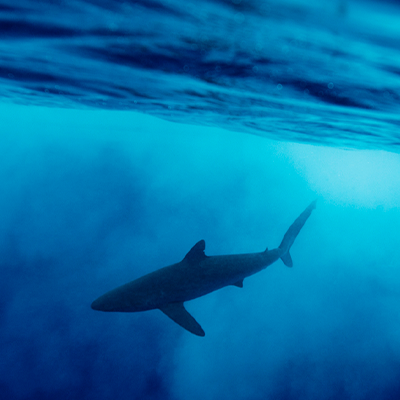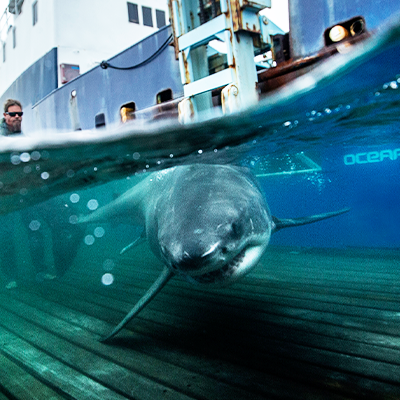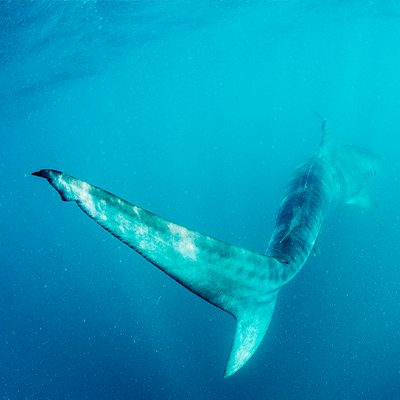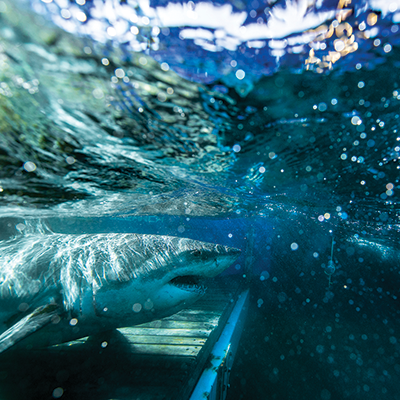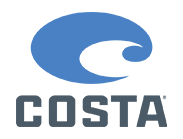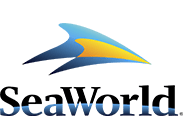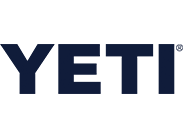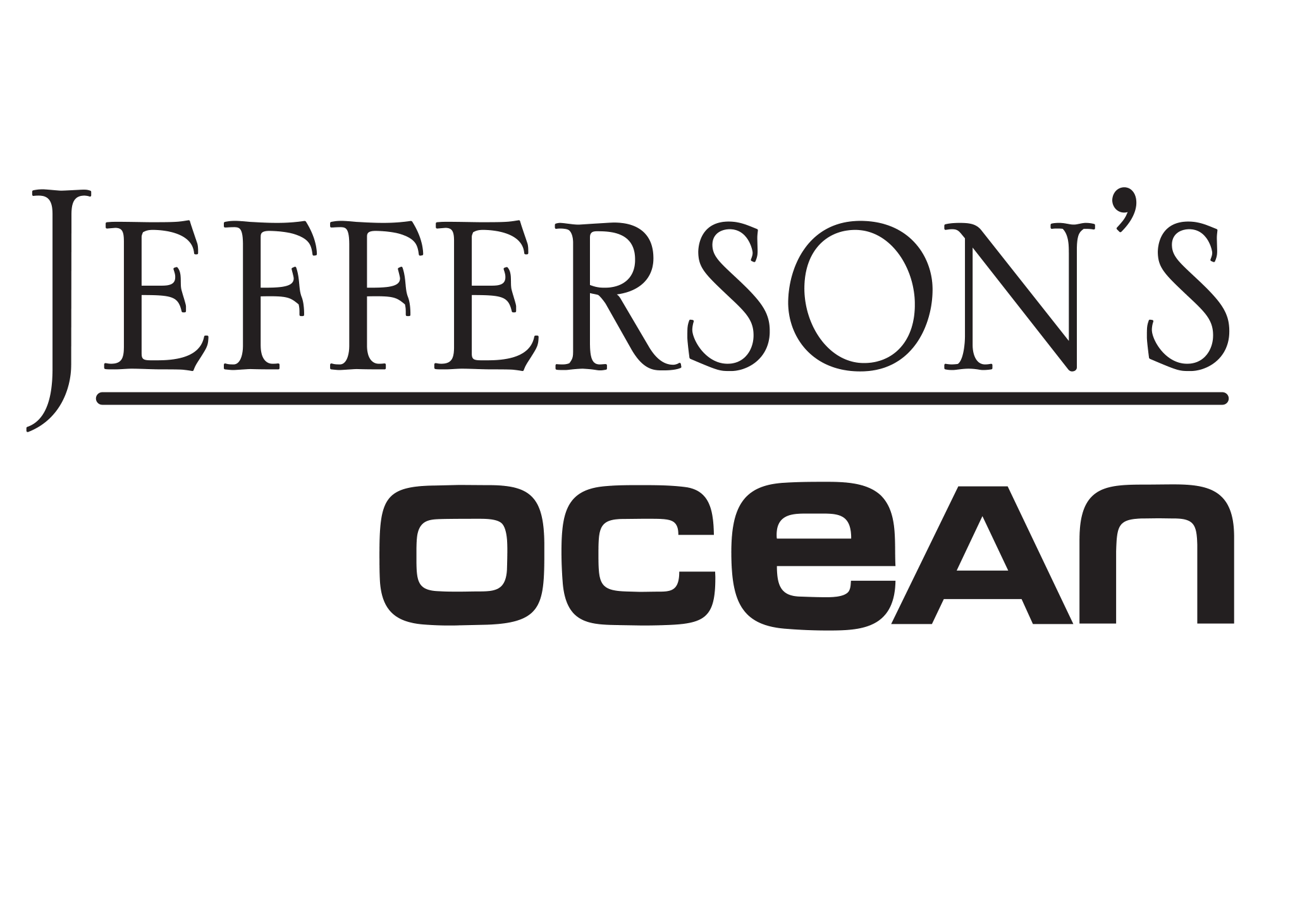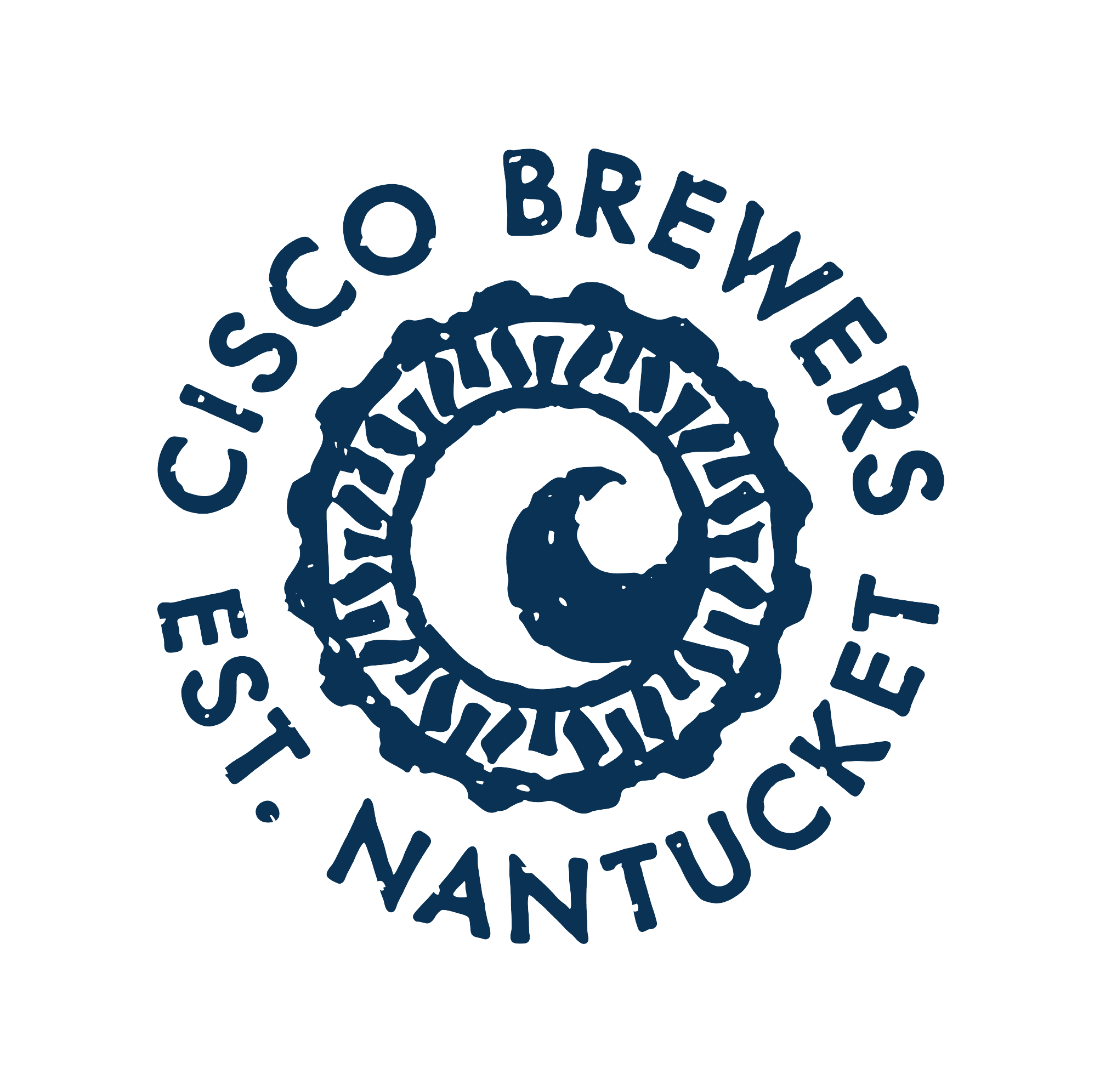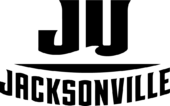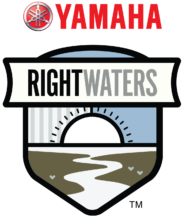White sharks are heading north soon! OCEARCH is embarking on our 45th ocean research expedition to learn more about these animals as they begin to leave the Carolinas region and transition north for the summer…
Our data shows that prior to their spring migration north, many white sharks use the productive continental shelf waters around the Outer Banks, North Carolina region as an overwintering and spring staging area before heading farther north. From April to June each year, both male and female sharks can be found in this area in significant numbers, likely taking advantage of the ample food supply to fuel their migration to summer feeding grounds.
Our dedicated and collaborative team has successfully tagged 88 white sharks throughout the western North Atlantic, collecting data for over 24 science projects that have enabled us to put together the pieces of the life history puzzle of the white shark in the western North Atlantic ocean. Our puzzle is nearly solved, with just 12 sharks left to reach our goal of 100 sharks sampled, tagged and released in this region.
Expedition Northbound will take place from April 17 – May 4. Explore in real time with us @OCEARCH.
17
25
4
41
-
EXPEDITION 45: WEEK 1 UPDATEOur goal during our 45th Expedition is to study mature animals off the Southeast United States before they head north for the summer. We’ve seen sharks everyday and have successfully sampled, tagged and released three white sharks. Learn more about week one of Expedition Northbound.
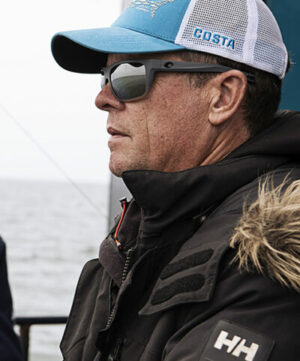
Fischer
OCEARCH
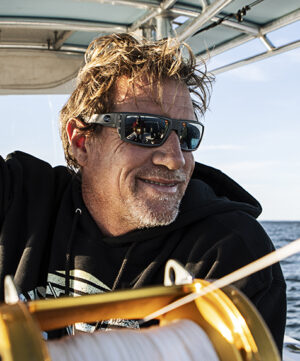
McBride
OCEARCH
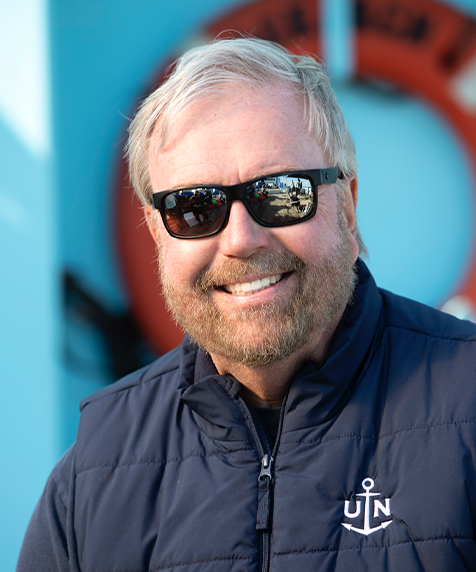
OCEARCH

OCEARCH
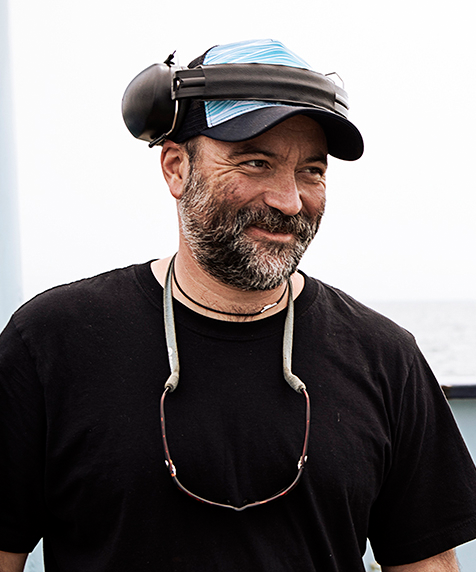
Dave Stevenson
OCEARCH

John Tyminski
OCEARCH

Lettieri
OCEARCH

Purcell
OCEARCH

Jacksonville University

Emily Christiansen, DVM, MPH, Dipl. ACZM
North Carolina Aquariums
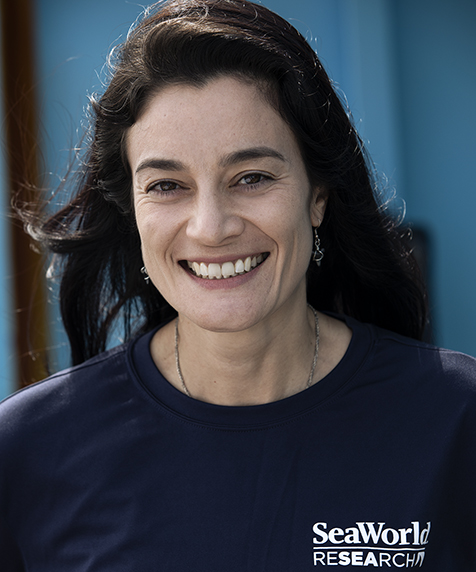
SeaWorld Orlando

James Gillis, M.Sc., Ph.D.
South-East Zoo Alliance for Reproduction & Conservation, SeaWorld Parks & Entertainment

Mackenzie Horton
Jacksonville University, Student

Kimberly B. Ritchie, Ph.D.
University of South Carolina at Beaufort
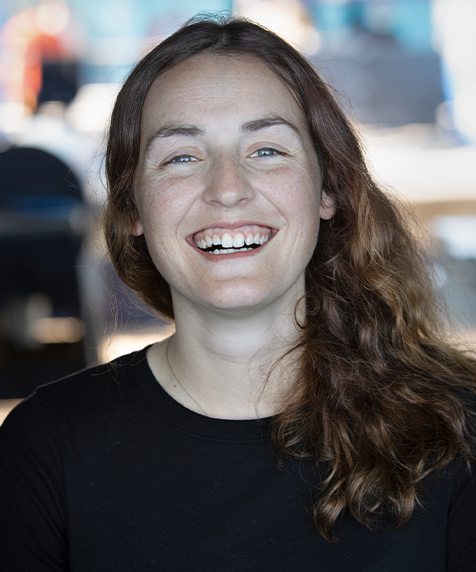
Wesley Ogloff
University of Windsor
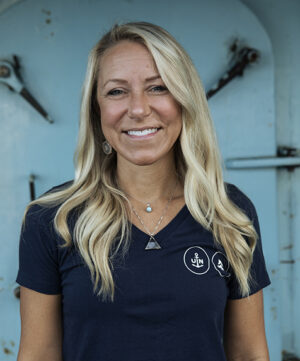
Nicole Ralston
OCEARCH

Paige Finney
OCEARCH

Avery McAlhany
OCEARCH

Alex Thomas
OCEARCH

Christopher Ross
ChrisRossPhoto.com

Harrison Newman Jardine
Elevated Pictures
Videographer

Jonathan Wesenberg

Daniel Skaff
OCEARCH

Olivia Masone
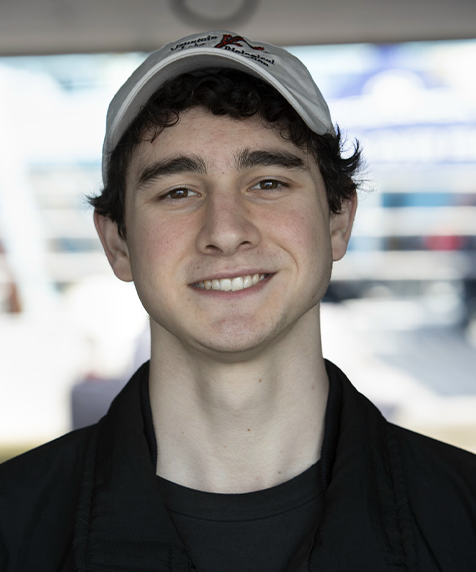
Cade Roach
OCEARCH Intern

Liza Jones

Sofia McBride
EXPEDITION STEM ACTIVITIES
Explore with us at home with these interactive activities for grades K-12! Build Science, Technology, Engineering, and Math skills (STEM) as you participate virtually with our team of collaborative scientists and fishing crew. For more information, reach out to our education team at education@ocearch.org
What is the Western North Atlantic White Shark Study?
This project began in 2012 and has been called the “Western North Atlantic White Shark Study”. The purpose of this project is to solve the life history puzzle of the Western North Atlantic White Shark by gathering the appropriate data that would tell us where this population migrates, feeds, mates, gives birth and more.
What type of studies do you expect to run during this expedition?
This expedition supports 24 individual studies for 45 principal investigators from 30 research institutions. In addition to putting 3 tracking devices on the animals, researchers will take a number of tissue, blood and other samples to learn even more about white shark biology. These samples can be used to understand the overall population health of white sharks in the Western North Atlantic, reproductive health, and even what types of antibiotics can be used if a human is bitten.
What type of samples do you expect to collect during this expedition?
The team will collect blood, mucus, parasites, muscle, fin clips, eye measurements, feces, urine, and semen, whenever possible. Ultrasound exams will also be performed to examine reproductive and heart health.
Can you describe your process for tagging sharks?
Sharks are caught and guided to the platform using a handline. Once the sharks are on the platform and hoses of water have been set to enable the flow of oxygen, they are tagged and sampled. The tagging, handling and sampling procedures employed during the expedition follow the standards of the Institutional Animal Care and Use Committees (IACUC.org) of each institution, which is made up of scientists and veterinarians.
Will the sample collection impact the sharks health?
While the tagging method, which has been used on sharks and other species for over a half-century may cause some level of brief discomfort, there is no scientific evidence that it impacts their behavior or survival post-release. In fact, data from the GLOBAL SHARK TRACKER™ provides strong evidence that the animals tagged using this method show long-term survival and long-distance migrations indicative of normal function and reproductive cycles.
What does the data from the OCEARCH Tracker tell us about sharks?
The data allows us to see the range and migration patterns of sharks in different parts of the world, and helps us uncover the areas in need of protection. The tracking data allows studies such as the examination of fine and broad-scale movements, habitat use, site fidelity, residency, and feeding behavior of white sharks. The data we’ve enabled so far has allowed scientists to figure out the mating and breeding sites of the species on the west coast of Mexico – Guadalupe Island. Scientists have also documented the first migration of Great White Sharks to the gulf and the mid-Atlantic ridge.
What happens to the data you've collected?
The data is shared in an open source environment with collaborating institutions that utilize it to conduct studies that are eventually published in peer-reviewed scientific journals. The papers, which can take 2-5 years to publish, are used to assist in policy decisions. So far, there have been over 75 papers published based on OCEARCH expeditions and resulting studies.
How can I follow the expedition?
Follow OCEARCH on Facebook, Twitter, Instagram (@OCEARCH), YouTube and TikTok for Expedition Northbound updates. You can also follow the sharks tagged during Expedition Northbound by accessing the near-real-time, free online OCEARCH GLOBAL SHARK TRACKER™.
Who supports the expedition?
Costa Sunglasses, Yamaha RightWaters, SeaWorld, YETI Coolers, Ulysse Nardin, Cisco Brewers, Jefferson’s Bourbon, Jacksonville University, Landrys, Contender and individuals like you support the expedition through donations or making purchases in our online shop.

















